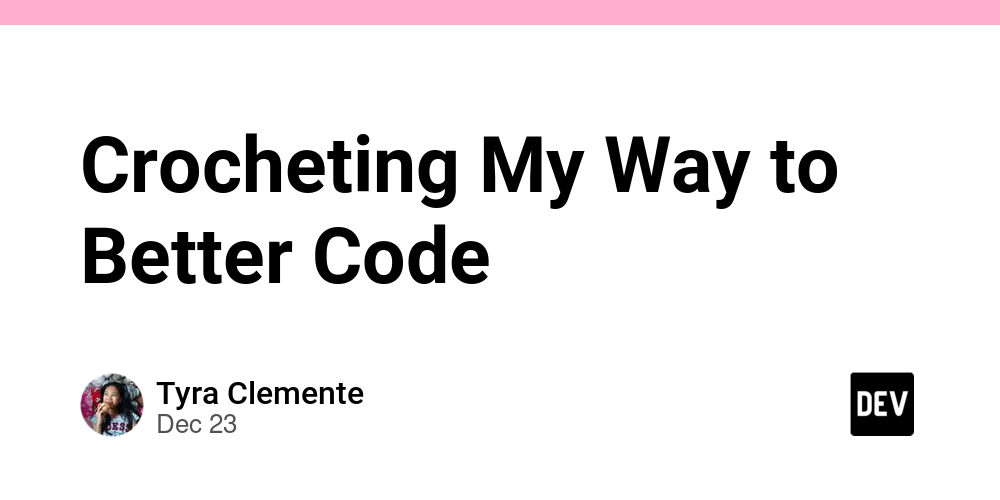Growing up, I dabbled in what you might call “grandma’s hobbies” – knitting, crochet, and cross-stitch, which I learned from my aunt. To be honest, I don’t like them that much. They are tedious, time-consuming, and sometimes even frustrating. But looking back, I realize these addictions taught me lessons that I didn’t fully understand at the time.
Take knitting for example. My first project was a scarf. I didn’t have the right materials, so I got creative. I took apart old, unused hats to use as yarn and even saved up a little pocket money to buy some new colors that caught my eye. When I was a kid, I didn’t think about matching colors—I just picked things that I thought looked fun. The result? A scarf with stripes in pink, black, green, brown to red, and bright yellow. It’s like a rainbow exploding, but not in a good way. I’m proud that I pulled it off, but even I can tell this is more of a crazy, messy experiment than a proper scarf. It taught me a hard lesson: Just because something is done doesn’t mean it’s done well.
The same thing happened with cross stitch. I pulled the fabric taut in a small hoop, pushed the needle through one of the holes, and pulled the thread through. Each stitch feels like adding a pixel to a blank screen. At first, it was just scattered dots of color—blue here, purple there—with no clear shape. But as I kept going, something started to happen.
Random dots start to connect, like pieces of a puzzle fitting together. The violets turned into petals and the blue began to grow leaves. Halfway through, the scene seemed to wake up. Each stitch makes it clearer, like I’m slowly filling in a secret image hidden in the fabric. It’s slow, and sometimes I get bored or make mistakes, but seeing the pictures come to life pixel by pixel makes it all feel magical.
Fast forward to adulthood and I tried crochet again, this time deciding to make a turtle. At first, everything went well, but I quickly realized that I was missing a lot of stitches. I was so focused on the pattern that I forgot about the stitch count. Suddenly, one side of the turtle’s shell looks too big, and the other side too small. What a mess. I kept going, hoping everything would come together, but no matter how hard I tried, it didn’t work out.
I had to undo some parts, redo other parts, and start over more times than I can count. Every time, I thought I was right, only to find another mistake. It feels like I’m chasing my own tail trying to fix the little bugs that keep popping up. At one point, I even wondered if I could finish it. The process was frustrating and it seemed like the harder I tried, the more mistakes I made.
But as I moved on, I slowly got better at noticing where I was going wrong and fixing it. It takes time and I have to be patient with myself. Eventually, the turtle started to come together, each stitch holding it in place just like it was supposed to. It’s not perfect, but it’s mine. It taught me that mistakes are part of the process, and focusing on the small details—like counting every stitch—makes all the difference.
This reminds me of Vincent Van Gogh’s words:
“Great things are accomplished by a series of small things coming together.”
That’s exactly what these hobbies taught me, even if I didn’t see it at the time. Every stitch, every thread, every choice matters. Whether you’re crafting, coding, or creating anything, it’s the details that determine the outcome.
Another quote that I often think of is from John Wooden:
“Small details matter. Small things make big things happen.
This quote has always stuck with me, especially now that I’m a developer. When I look at my work, I realize that creating software is a lot like knitting or crocheting. At first glance, it seems like it’s all for the big picture – the finished program, the final functionality. But just like handcrafting, it’s the little details that hold everything together.
When I’m writing code or designing a feature, small decisions matter. A misplaced parenthesis, a typo in a variable name or a missing semicolon – these little things can break the entire system. But when everything is in place, even the smallest part of the code will make the entire program run smoothly. It’s like when you crochet a small stitch, it may seem insignificant on its own, but when you put all the pieces together, it creates something greater than the sum of its parts.
I learned that the process of making a feature or building a system is more than just checking tasks. It’s about paying attention to every little detail and making sure every part fits into the big picture. Just like I had to carefully count every stitch when making a turtle, I had to write every line of code with precision. Every small step leads to something more meaningful.
Looking back, I’m actually grateful for those “grandma’s hobbies” that I didn’t always enjoy. They taught me something I carry with me every day at work: the importance of the little things. They may seem insignificant at first, but these small details can end up making a big difference.
